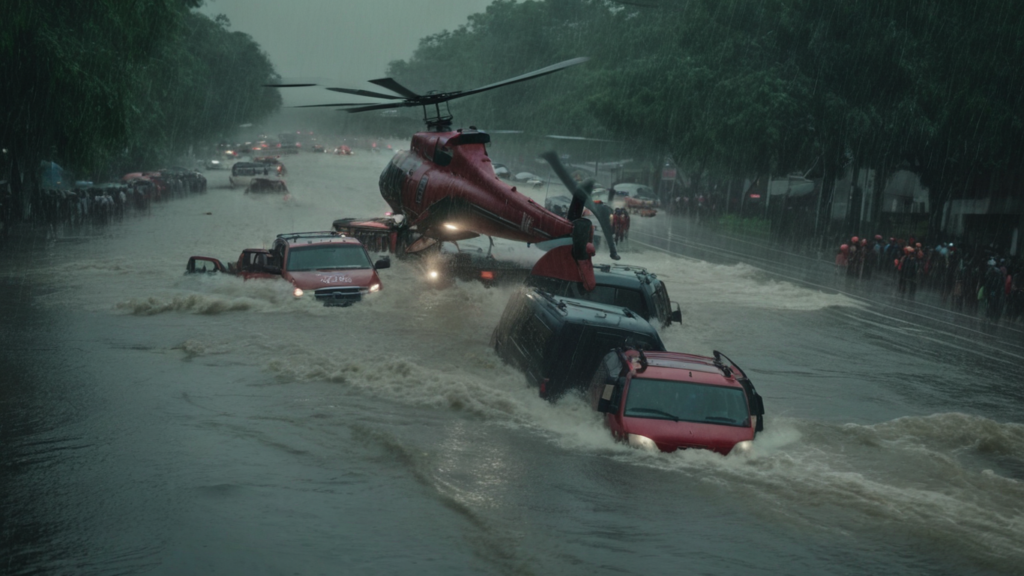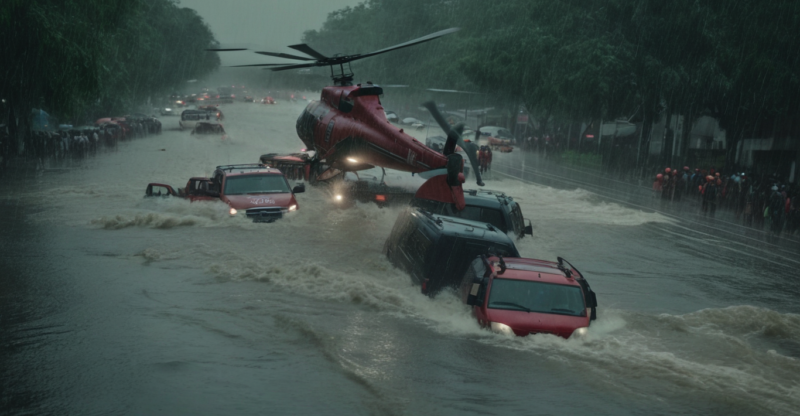Survival Preparation for a Flood

- Introduction
- Brief overview of flood survival preparation.
- Understanding Floods
- Different types of floods.
- Causes of floods.
- Importance of Flood Preparedness
- Highlighting the necessity of being prepared.
- Creating a Survival Plan
- Steps to develop a personalized flood survival plan.
- Gathering Essential Supplies
- Listing necessary items for a flood survival kit.
- Emergency Communication
- Importance of communication during floods.
- Establishing emergency contact methods.
- Evacuation Routes
- Identifying evacuation routes and safe locations.
- Securing Property
- Tips for safeguarding belongings and property.
- Family and Pet Safety
- Ensuring safety measures for all family members, including pets.
- Staying Informed
- Utilizing different information sources during floods.
- First Aid and Medical Supplies
- Including medical essentials in the survival kit.
- Water Safety
- Guidelines for safe water usage during floods.
- Food Preparation
- Tips for storing and preparing food during emergencies.
- Community Support and Resources
- Utilizing local resources and support networks.
- Post-Flood Recovery
- Steps to take after the floodwaters recede.
Survival Preparation for a Flood
Floods are natural disasters that can wreak havoc on communities, causing extensive damage to property and posing significant risks to human life. Whether caused by heavy rain, melting snow, storm surges, or dam failures, floods can occur with little warning, emphasizing the importance of being prepared. In this article, we’ll delve into essential survival preparation strategies for dealing with floods.
Understanding Floods
Floods come in various forms, including flash floods, river floods, coastal floods, and urban floods. They can result from intense rainfall, snowmelt, hurricanes, or even human activities like dam breaches. Understanding the different types and causes of floods is crucial for effective preparedness.
Importance of Flood Preparedness
Preparing for floods beforehand can mean the difference between safety and disaster. By having a well-thought-out plan in place, individuals and communities can minimize risks, protect lives, and reduce property damage.
Creating a Survival Plan
Developing a comprehensive survival plan is the first step in flood preparedness. This plan should include evacuation routes, emergency contacts, shelter options, and provisions for family members and pets.
Gathering Essential Supplies
A well-stocked survival kit is essential for weathering the challenges of a flood. Basic supplies such as non-perishable food, water, first aid kits, flashlights, batteries, and personal hygiene items should be readily available.
Emergency Communication
Maintaining communication during a flood is crucial for staying informed and coordinating rescue efforts. Establishing multiple communication channels, including cell phones, two-way radios, and social media, can help facilitate timely updates and emergency assistance.
Evacuation Routes
Identifying safe evacuation routes and emergency shelters is paramount for swift and safe evacuation. Familiarizing oneself with local evacuation procedures and designated safe zones can save precious time in critical situations.
Securing Property
Taking preventive measures to protect property from flood damage is essential. Elevating electrical appliances, sealing basement walls, and installing flood barriers or sandbags can help mitigate potential losses.
Family and Pet Safety
Ensuring the safety of all family members, including pets, should be a top priority. Develop contingency plans for evacuating pets, and include pet supplies in your emergency kit.
Staying Informed
Stay updated on flood alerts and weather forecasts from reliable sources such as the National Weather Service or local authorities. Pay attention to evacuation orders and heed warnings from emergency management agencies.
First Aid and Medical Supplies
Having a well-equipped first aid kit and an ample supply of essential medications is critical during flood emergencies. Be prepared to administer basic medical care until professional help arrives.
Water Safety
In the aftermath of a flood, water sources may be contaminated, posing health risks. Boil water before consumption or use alternative purification methods to ensure its safety.
Food Preparation
Store ample supplies of non-perishable food items that require minimal preparation. Consider dietary needs and preferences when stocking up on emergency provisions.
Community Support and Resources
Leverage community resources and support networks to enhance flood preparedness. Collaborate with neighbors, local organizations, and emergency responders to share information and resources.
Post-Flood Recovery
After the floodwaters recede, the recovery process begins. Assess property damage, file insurance claims promptly, and seek assistance from government agencies and relief organizations for rebuilding efforts.
Conclusion
Surviving a flood requires careful planning, preparation, and swift action. By following the outlined strategies and remaining vigilant, individuals and communities can mitigate risks, ensure safety, and expedite recovery in the aftermath of a flood.
FAQs (Frequently Asked Questions)
- What should I include in my flood survival kit?
- Your survival kit should include non-perishable food, water, first aid supplies, flashlights, batteries, personal hygiene items, and important documents.
- How can I protect my property from flood damage?
- Elevate electrical appliances, seal basement walls, install flood barriers or sandbags, and consider purchasing flood insurance.
- What should I do if I receive a flood evacuation order?
- Follow evacuation orders promptly. Gather essential items, secure your property, and proceed to designated evacuation routes or shelters.
- How can I ensure the safety of my pets during a flood?
- Develop evacuation plans for your pets, include pet supplies in your survival kit, and ensure their identification tags are up-to-date.
- What steps should I take during the post-flood recovery phase?
- Assess property damage, file insurance claims, seek assistance from relief organizations, and prioritize safety while rebuilding.










